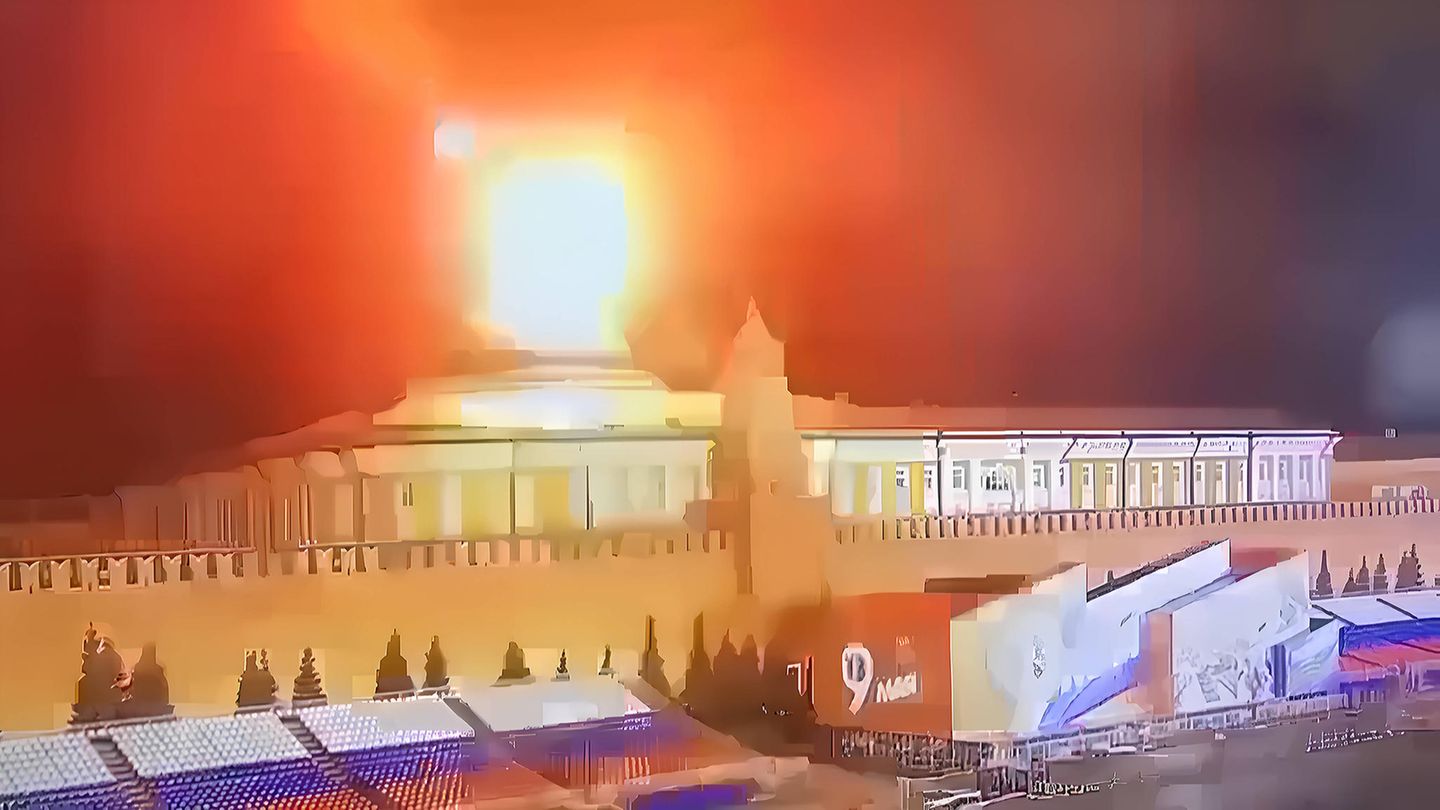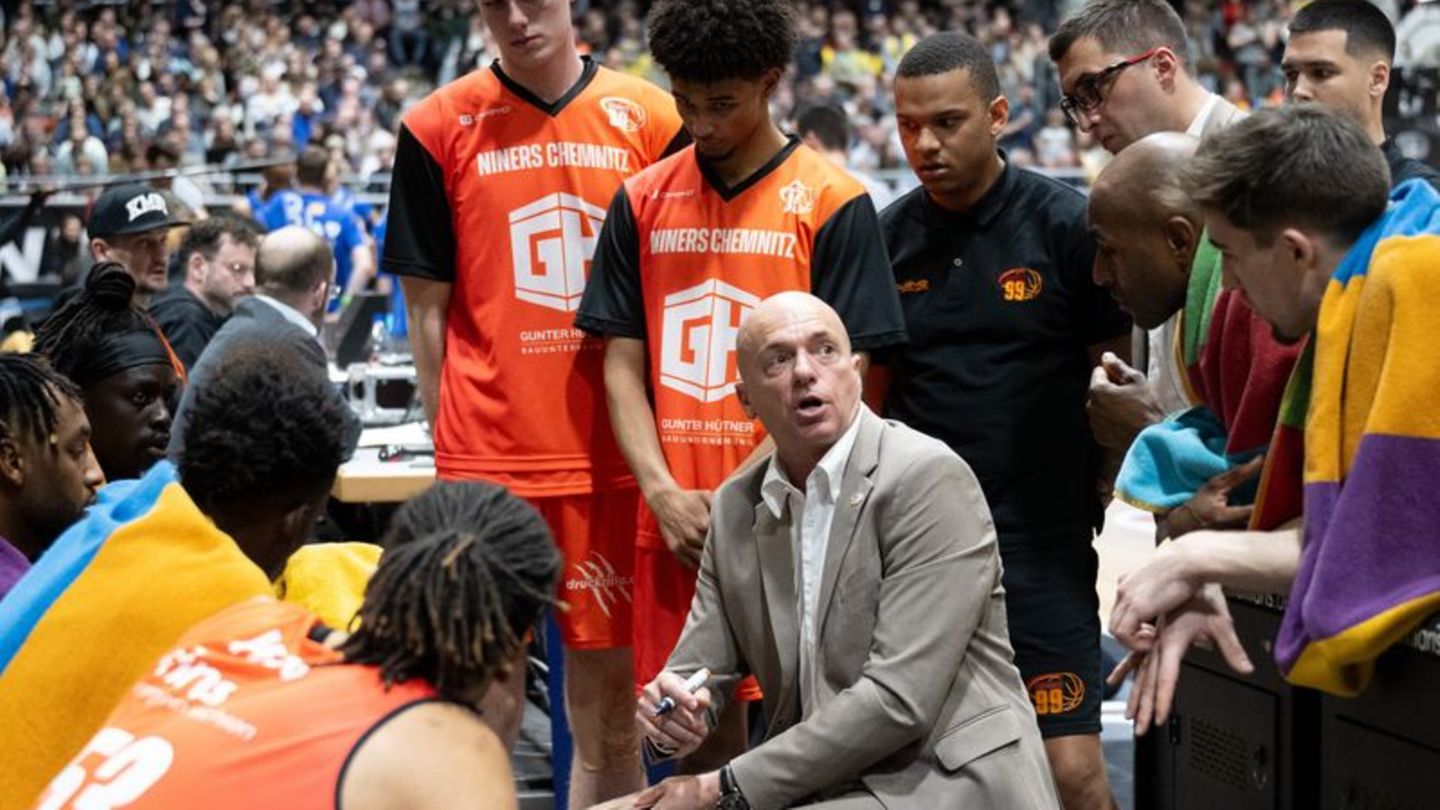It is the next, at least verbal, level of escalation between Russia and Ukraine. The Kremlin has accused the government of Volodymyr Zelensky of attempting a drone attack on President Vladimir Putin. Kyiv denies, the world is puzzled. An overview.
What happened?
According to the Russian Presidential Office, two drones that were headed for the Kremlin were shot down on Wednesday night. As a result, several video clips circulated on the Internet, which are intended to document the incidents from different perspectives.
A statement released by the Kremlin on Wednesday afternoon said that Ukraine was responsible for the attack – the decision-makers in Kiev wanted to assassinate President Vladimir Putin. There were no injuries, but Putin himself was not in the Kremlin at the time in question.
There have been several attacks on Russian infrastructure in the past few days. A few hours before the drone incident in Kiev, a Russian freight train derailed near the Ukrainian border after an explosion – for the second time within a short period of time. Previously, there had also been massive drone attacks on an oil and fuel depot in and near Crimea. According to Ukraine, it is about to launch its long-awaited counter-offensive. According to experts, attacks on Russian supply routes could be part of both the preparation and the long-term objective.
What can you see on the videos?
A total of five videos are now circulating showing the drone attacks on the Kremlin’s Senate Palace in the heart of Moscow. Explosions can be seen on three recordings, and on the other two consequences of the impacts (cloud of smoke and presumably burning remains of the first drones on the dome roof) – some filmed from a greater distance.
The first video went online on Wednesday night on a smaller Telegram channel, the others – and that at least makes you sit up and take notice – bundled within a short period of time on Wednesday afternoon.
While the precise course of the attacks initially remained unclear, a recording released by the Moscow television station “TV Center” in the afternoon then allowed more concrete conclusions to be drawn about the incidents. In the videos filmed by a surveillance camera on the Bolshoi-Moskvoretsky Bridge, the dial of the large clock on the Spasskaya Tower can also be seen. The Czech investigative journalist Mark Krutov not only succeeded in locating the drone attacks in terms of time, but also in determining the flight direction of the unmanned aerial vehicles (UAV).
Accordingly, the first drone coming from the west crashed into the dome at 2:27 a.m. Moscow time, triggering a small fire on the roof. The second drone followed exactly 16 minutes later, at 2.43 a.m., but exploded above the dome roof and did not cause any further damage, as the recordings suggest. Unlike the first drone, however, number two was approaching from the east, Krutov noted.
Another video shows the explosion of the second drone from a different perspective. The short shot shows people climbing the dome of the Senate Palace before the drone explodes. It is unclear why the people were there. It would be conceivable that the people should possibly assess the damage of the first impact. However, advocates of the thesis of a Russian staging suspect that the people are on the roof as a preventive measure in order to be able to extinguish a possible fire directly.
How does Kyiv govern?
Kiev sharply rejected the allegations from Russia – Ukraine had absolutely nothing to do with the alleged attack. “We’re not attacking Putin, we’ll leave that to the (international) tribunal,” President Zelenskyy said at a press conference in Finland.
Presidential adviser Mykhailo Podolia accused the Russian government of using the drone incident only to justify attacks on the Ukrainian civilian population. They are only waging a defensive war and are therefore not attacking any objects on Russian territory, he wrote on Twitter. After all, a direct attack on Russian territory would bring no military advantage. However, in the past few weeks and months there have been repeated reports of Ukrainian attacks on Russian territory close to the border. Kyiv has always denied involvement.
How is Russia reacting?
In the first official statement on Wednesday afternoon, Moscow blamed Kiev for the incident: “We regard these actions as a planned act of terrorism and an attempt on the life of the President of the Russian Federation,” it said. Appropriate countermeasures are reserved. There was no information on what exactly they might look like. Ex-Kremlin boss Dmitry Medvedev, however, demanded that Ukrainian President Volodymyr Zelenskyy be “physically eliminated”. In his eyes, the “is not needed to sign the surrender of Ukraine,” he wrote on Telegram. “As is well known, Hitler did not sign any (surrender) either,” Medvedev continued.
Kremlin spokesman Dmitry Peskov on Thursday accused the United States of having a finger in the pie. It is already known “that decisions about such actions and about such terrorist attacks are not made in Kiev, but in Washington.”
Sipri report
These 10 countries spent the most on their military in 2022
Is this the first drone incident on Russian soil?
So far there has been neither an independently confirmed Ukrainian drone attack on Russian soil nor a crash in the Moscow metropolitan area.
However, reports to the contrary are piling up. At the end of March, a drone crashed in the small Russian town of Kireyevsk – about 400 kilometers from the Ukrainian border. In February, a flying object went down in the village of Gubastovo, about a two-hour drive from the capital. Images of the wreck that were subsequently released reportedly matched a type of drone made in Ukraine. As early as December, the Russian military leadership claimed that Ukraine had flown a drone strike against an air base 600 kilometers northeast of the border. Based on Russian media reports, the British BBC counts more than 20 suspected Ukrainian drone attacks on Russian soil or Russian-controlled territory this year alone, most of them on the annexed Crimean Peninsula. In none of these cases was there sufficient evidence of Ukrainian involvement.
According to experts, a drone strike on Moscow would be at least theoretically possible. Ukraine’s Technology Minister Mykhailo Fedorov recently boasted that the R18 drone “can fly from Kiev to Moscow and back.”
What speaks for a “false flag operation”?
It is currently not possible to say whether the drone incident was a Russian staging, a Ukrainian attack or an action by a third party.
However, numerous experts suspect that it could be a false flag operation – that is, that the Kremlin itself was behind the explosions. Although there are some indications that this is the case, there is no proof of this either.
For example, experts from the US think tank “Institute for the Study of War” (ISW) are of the opinion that the Russian government probably staged the attack in order to suggest to the public an imminent threat at home and to create the conditions for to create a broader social mobilization. Zelenskyj had previously made similar assumptions publicly.
The apparently timed and coordinated outrage on the Kremlin side also speaks for a deception – the statements followed in bulk and, above all, hours later. Both the Kremlin and the Russian news agencies Ria and Tass did not respond to the incidents with a statement and initial reports until around 2:30 p.m., around twelve hours after the attacks. Only then did the videos spread online. Western analysts see this as a deliberately coordinated response by Russia.
The British Russia expert Mark Galeotti also noted on Twitter that Putin “is known to rarely go to the Kremlin, let alone sleep there”.
How did the drones even get so close to the Kremlin?
The (non-existent) answer to this question also raises doubts about the account from the Kremlin. In fact, given the massive anti-aircraft presence in and around Moscow, it is unlikely that enemy drones would even get that close to government premises. According to the ISW, Russia had even strengthened its defense systems recently. In order to increase the chances of success, the Ukrainian drones would also have to be launched from Russian soil. However, the sheer embarrassment of having two enemy aircraft making it into the heart of the country could hardly be denied. The question arises as to whether Moscow values the benefit of such a false flag operation more than the damage caused by the humiliation and the possibly damaged confidence in Putin’s leadership.
Incidentally, the alleged assassination attempt on the president only plays a minor role on Russian state television. Although the commentators address the incident, they do not show the video footage that is circulating online.
Sources: ; “”; “”; “”; “”; DPA
Source: Stern
I have been working in the news industry for over 6 years, first as a reporter and now as an editor. I have covered politics extensively, and my work has appeared in major newspapers and online news outlets around the world. In addition to my writing, I also contribute regularly to 24 Hours World.



